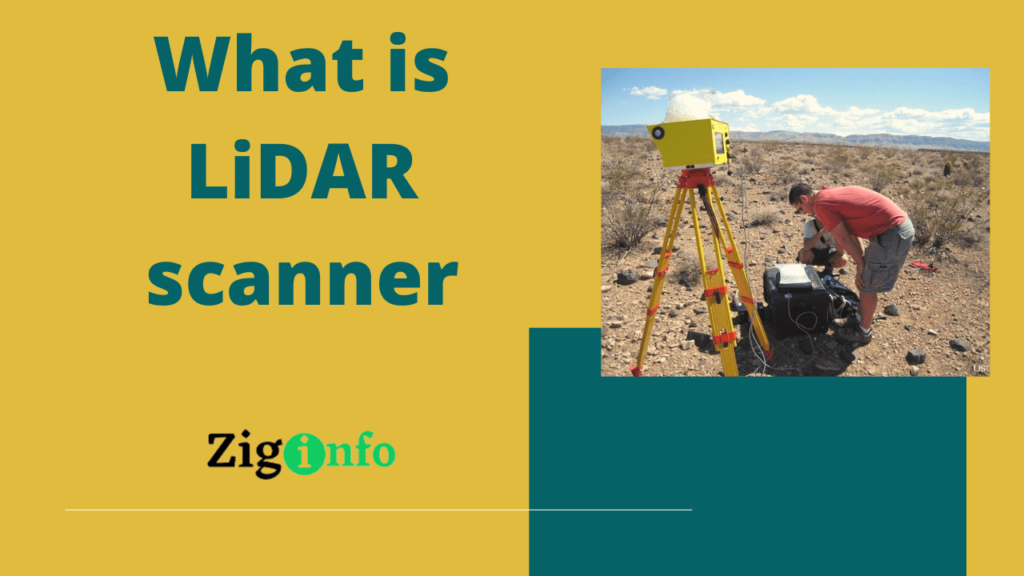What is Lidar Scanner | How does LiDAR work?

In recent years, the use of Light Detection and Ranging (LiDAR) technology has become increasingly popular in various industries such as surveying, autonomous vehicles, robotics, and more. LiDAR scanners are becoming more common and sophisticated, providing precise and detailed 3D models of objects and environments. In this article, we will delve into what LiDAR is, how it works, and the various applications of LiDAR scanners.
What is LiDAR?
LiDAR is a remote sensing technology that measures distance by illuminating a target with a laser and then analyzing the reflected light. LiDAR technology is similar to radar, but instead of using radio waves, LiDAR uses light waves in the form of laser beams. By measuring the time it takes for the laser beam to travel to the target and back, LiDAR scanners can determine the distance between the scanner and the target.
How does LiDAR work?
A LiDAR scanner emits a laser beam that travels through the air and hits the target, which could be a building, vehicle, or landscape. When the laser beam hits the target, it reflects back to the scanner. The LiDAR scanner then measures the time it takes for the laser beam to travel to the target and back to the scanner. By using the speed of light, the LiDAR scanner can calculate the distance between the scanner and the target.
The LiDAR scanner emits thousands of laser pulses per second, creating a point cloud of the object or environment being scanned. Each point in the point cloud represents a precise 3D location in space, and the LiDAR scanner can create millions of these points in just a few seconds.
Applications of LiDAR scanners
LiDAR scanners have numerous applications in various industries, including:
- Surveying and mapping: LiDAR scanners can be used to create highly detailed and accurate 3D maps of the earth’s surface, which can be used for urban planning, environmental monitoring, and disaster management.
- Autonomous vehicles: LiDAR scanners are used in self-driving cars to help the vehicle “see” its surroundings and navigate safely. LiDAR scanners can create 3D maps of the vehicle’s environment, detecting and identifying obstacles and other vehicles on the road.
- Robotics: LiDAR scanners are also used in robotics to help robots navigate and interact with their environment. LiDAR scanners can be used to create 3D models of objects, which robots can then use to identify and manipulate objects in their surroundings.
- Agriculture: LiDAR scanners can be used in agriculture to create 3D maps of crops, allowing farmers to monitor crop health and growth, detect pests and diseases, and optimize irrigation.
- Forestry: LiDAR scanners can also be used in forestry to create 3D maps of forests, allowing forestry managers to monitor forest health and growth, detect and prevent forest fires, and manage wildlife habitats.
Advantages of LiDAR scanners
One of the biggest advantages of LiDAR scanners is their ability to create highly detailed and accurate 3D models of objects and environments. LiDAR scanners can capture millions of data points in just a few seconds, providing precise and detailed information that would be difficult to obtain through other means.
LiDAR scanners are also highly versatile, with applications in a wide range of industries. They can be used for surveying and mapping, autonomous vehicles, robotics, agriculture, forestry, and more.
Another advantage of LiDAR scanners is their ability to operate in various lighting and weather conditions. Unlike other sensors that may be affected by bright sunlight or heavy rain, LiDAR scanners use their own light source (laser beams), allowing them to operate in any lighting or weather conditions.
Challenges and limitations of LiDAR scanners
Although LiDAR scanners have numerous advantages, they also have some challenges and limitations. One of the main challenges is the cost of the technology. LiDAR scanners can be expensive, and this cost may limit their use in certain industries and applications.
Another challenge is the size and weight of LiDAR scanners. Some LiDAR scanners can be large and heavy, which can make them difficult to use in certain environments or on certain vehicles or robots. However, smaller and more lightweight LiDAR scanners are being developed and used in some applications.
LiDAR scanners also have some limitations in terms of their range and accuracy. The accuracy of a LiDAR scanner can be affected by various factors such as the reflectivity of the target, the angle of incidence of the laser beam, and atmospheric conditions. Additionally, LiDAR scanners may not be able to detect certain objects such as transparent or very small objects.
Future of LiDAR scanners
The use of LiDAR scanners is expected to continue to grow in the coming years, as the technology becomes more advanced and more affordable. The development of smaller and more lightweight LiDAR scanners will likely increase their use in applications such as drones and robotics.
There is also ongoing research into new applications of LiDAR scanners, such as in the medical field, where LiDAR scanners could be used to create 3D models of the human body for surgical planning and other medical applications.
Conclusion
LiDAR scanners are a powerful remote sensing technology that can create highly detailed and accurate 3D models of objects and environments. LiDAR scanners have numerous applications in various industries, including surveying and mapping, autonomous vehicles, robotics, agriculture, and forestry. Although LiDAR scanners have some challenges and limitations, their use is expected to continue to grow in the coming years as the technology becomes more advanced and more affordable.
Also read…
About OLA Cabs in India – History, Services & Business Model